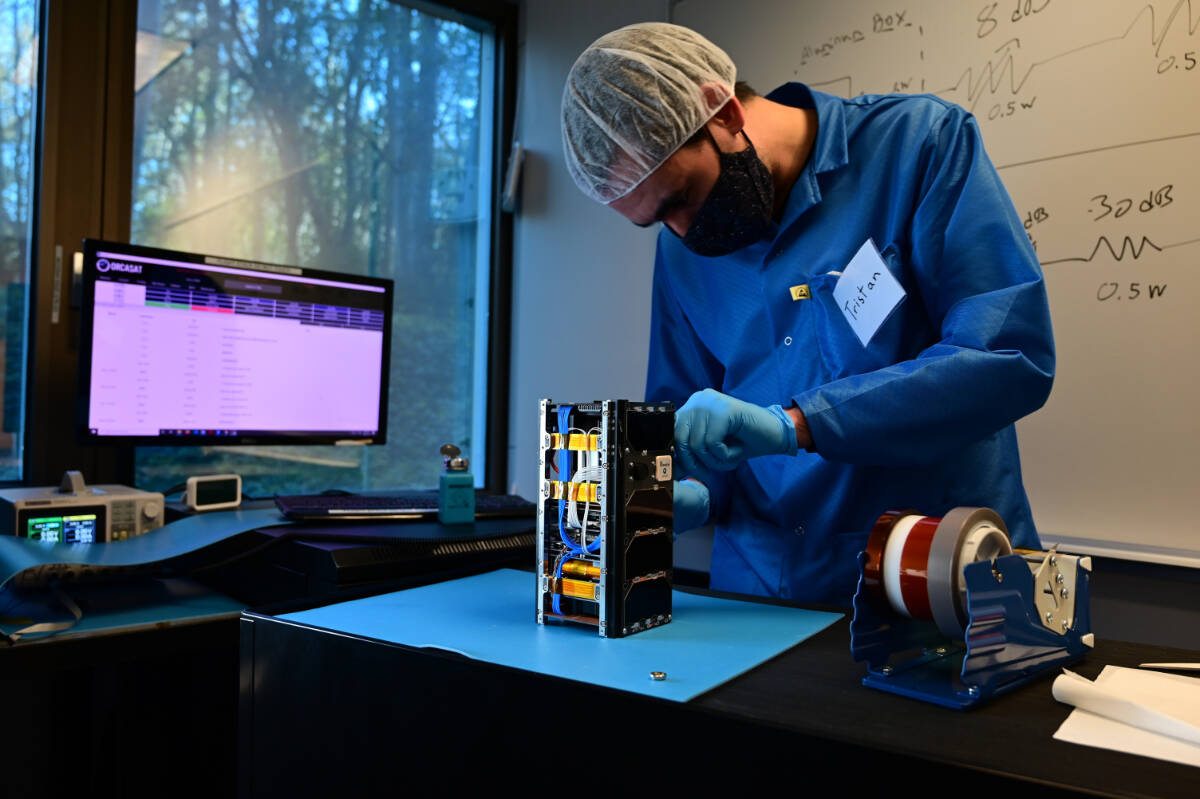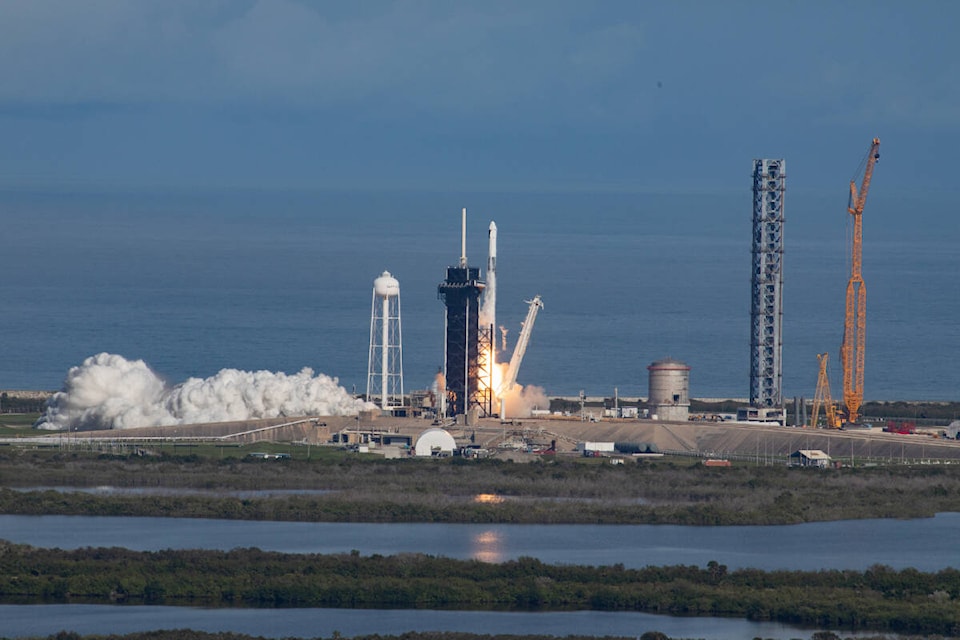While the International Space Station was travelling over the Pacific Ocean early Sunday morning, a SpaceX Dragon cargo spacecraft carrying a miniature satellite built by University of Victoria students autonomously docked to the space-facing port of the station’s Harmony module.
UVic’s optical reference calibration satellite, known as ORCASat, embarked on its journey into space at 11:20 a.m. on Saturday from NASA’s Kennedy Space Center in Florida.
Witnessing the launch was a major relief for ORCASat project manager Alex Doknjas, who nervously watched from his family’s living room in Campbell River on Saturday morning.
“It was pretty awesome,” Doknjas, a recent graduate of UVic’s engineering program, told Black Press Media. The initial launch scheduled for Nov. 22 was scrapped due to poor weather.
UVic’s ORCASat won a national competition funded by the Canadian Space Agency (CSA), the Canadian CubeSat Project, which saw 15 teams of students from each province and territory design and build their own CubeSat with the guidance of CSA experts and representatives from the Canadian space industry.
As a result, UVic’s satellite was one of two post-secondary projects from Canada chosen to be part of Saturday’s launch, alongside a satellite built by students at Dalhousie University in Halifax, N.S.
“It’s pretty remarkable, especially because UVic isn’t a huge school,” Doknjas said. “I think that’s pretty impressive.”
More than 100 full-time researchers, co-op and volunteer students from UVic Satellite Design, UBC Orbit and Simon Fraser University Satellite Design have all contributed to the project which began in 2018.

ORCASat is comparable to the size of a two-litre carton of milk or tissue box and only weighs about two-and-a-half kilograms. Once sent out into earth’s orbit the satellite will act as an artificial star, serving as a reference light source in orbit that can be viewed by telescopes back down on earth, said Doknjas.
“What we’re trying to do is demonstrate this concept of calibrating telescopes,” he said. “If you’re a telescope on the ground observing a star, you’re observing the light that the star emits and that light travels through earth’s atmosphere. The atmosphere is constantly changing and as light passes through it, the light gets scattered, and that effect of how light reacts in the atmosphere is not well understood.”
The difference between ORCASat and an actual star, however, is that scientists on earth can communicate with ORCASat, allowing them to know exactly how bright the satellite is, in addition to how bright it appears through a telescope.
“Now you have two separate measurements. You know exactly how bright it actually is, and you know bright it appeared to you. From those two measurements you can calculate the difference, which is how much of that light is lost in the atmosphere,” explained Doknjas.
Doknjas said that although the concept isn’t new, it’s the first time that a light source capable of performing an experiment like this has been carried on a satellite into space. He added that the technology could be used in the future for earth observation, or even methane detection for climate change.
ORCASat will remain at the International Space Station before being released into earth’s orbit to collect data for approximately one year, but that depends on factors like sun flares and solar radiation that impact the life of the satellite.
ALSO READ: BC Aviation Museum seeking donations for a new exhibit
Do you have a story tip? Email: austin.westphal@saanichnews.com. Follow us on Twitter and Instagram, and like us on Facebook.



